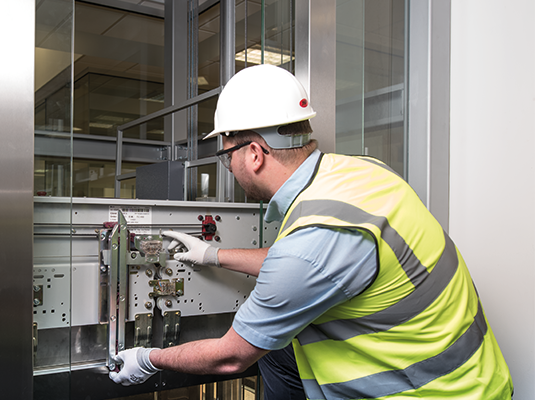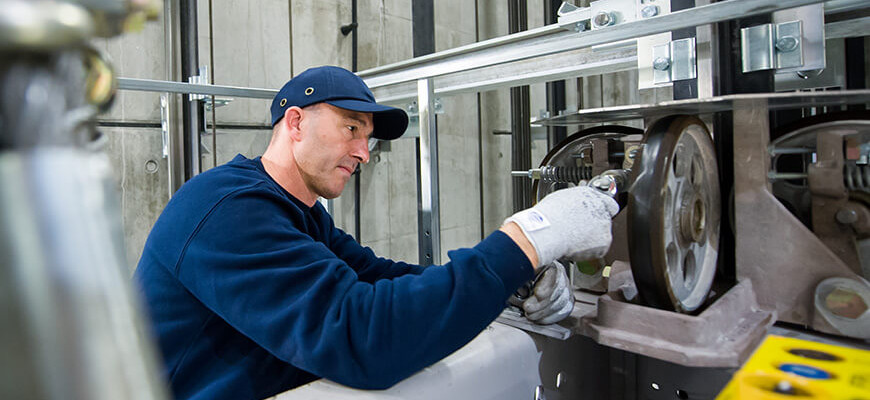Comprehensive Maintenance Checklist for Ensuring Ideal Performance of Platform Lifts for Handicapped Individuals
Keeping the ideal efficiency of platform raises marked for people with disabilities is a critical facet of guaranteeing their safety and security and availability. There is a critical aspect commonly forgot that can substantially influence the overall performance and security of these lifts.
Inspection and Cleaning Procedures
To make sure the ideal performance and security of platform lifts, detailed and regular assessment and cleansing treatments need to be faithfully followed. Any type of signs of wear and tear, uncommon noises, or malfunctions ought to be attended to quickly to preserve the lift's efficiency and protect against accidents.

Lubrication and Greasing Techniques
Routine maintenance of platform raises extends beyond examinations and cleaning procedures to consist of the important element of lubrication and greasing techniques for optimum performance and longevity. Lubrication plays a vital role in ensuring smooth operation and avoiding damage on moving parts. When it concerns platform lifts for handicapped people, appropriate lubrication is vital to preserve risk-free and trusted functionality.
To begin, it is vital to make use of the right type of lubricating substance for each and every element of the platform lift. Different parts might require specific lubricating substances such as silicone-based or lithium-based greases. Regularly examining the problem of the lubricant and making certain appropriate degrees are preserved is key to avoid friction and corrosion.
Furthermore, oiling methods must be brought out adhering to maker standards and upkeep schedules. Over-greasing or under-greasing can both lead to operational issues, so it is important to strike the best equilibrium. By sticking to a comprehensive lubrication and oiling regimen, platform lifts can operate successfully, silently, and securely, inevitably profiting the people who depend on them for access.

Electrical System Checks and Testing
Maintenance of system raises consists of extensive checks and rigorous testing of the electrical system to make sure optimum efficiency and safety. The electric system is an important part of system lifts for disabled individuals, as it powers the lift device and different security features.
Normal testing of the electrical system is important to avoid breakdowns, decrease downtime, get redirected here and ensure the safety of lift users. This includes checking voltage levels, conducting insulation resistance tests, and verifying the appropriate functioning of backup power systems. Any abnormalities or deviations from standard operating specifications need to be quickly dealt with to preserve the lift's integrity and conformity with safety policies. By focusing on extensive electrical system checks and testing as component of regular upkeep, platform lift proprietors can extend the life expectancy of their tools and try these out supply a protected transport solution for individuals with disabilities.
Security Mechanism Confirmation

Moreover, the over-speed guv, a vital security feature that prevents the lift from relocating too promptly, must undergo comprehensive screening to verify its performance. It is likewise important to take a look at the interlock system that guarantees the doors are safely secured while the lift functions. Routine confirmation of these safety and security systems is critical in maintaining the security standards of platform lifts and safeguarding the health of users.
Emergency Situation Preparedness and Feedback
In times of situation, a distinct emergency readiness and reaction plan is basic to try here making sure the security and protection of platform lift customers. Platform lifts are critical for making it possible for handicapped people to accessibility different levels of structures, making it vital to have steps in place for emergencies. Emergency preparedness entails performing regular drills to acquaint individuals and team with discharge procedures in situation of power interruptions, mechanical failings, or other unanticipated cases. It is necessary to prominently display emergency get in touch with info and instructions for individuals in available formats near the lifts. Upkeep workers must also be trained to rapidly react to emergency situation calls and repair any problems successfully. Furthermore, developing interaction methods with pertinent authorities, such as developing monitoring and emergency solutions, can promote a coordinated feedback during important situations. By focusing on emergency situation preparedness and response, platform lift drivers can boost the total safety and security and functionality of these essential availability devices for disabled people.
Conclusion
Finally, normal maintenance of system lifts is necessary for making sure optimum efficiency and security for disabled individuals. lift modernization. By following a detailed list that includes assessment, cleaning, lubrication, electric system checks, safety and security device confirmation, and emergency preparedness, the threat of breakdowns and accidents can be decreased. It is vital to prioritize upkeep to give a dependable and efficient means of transport for individuals with impairments